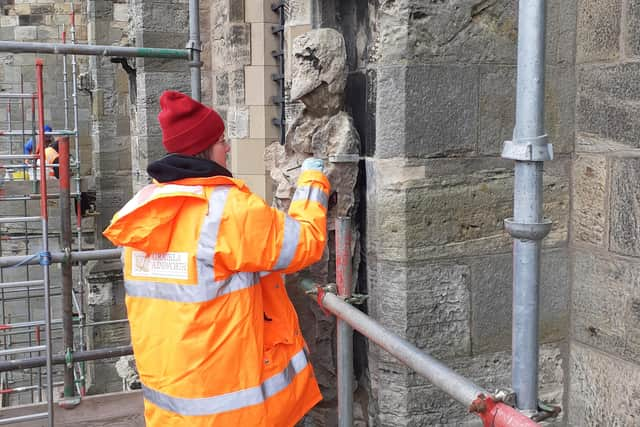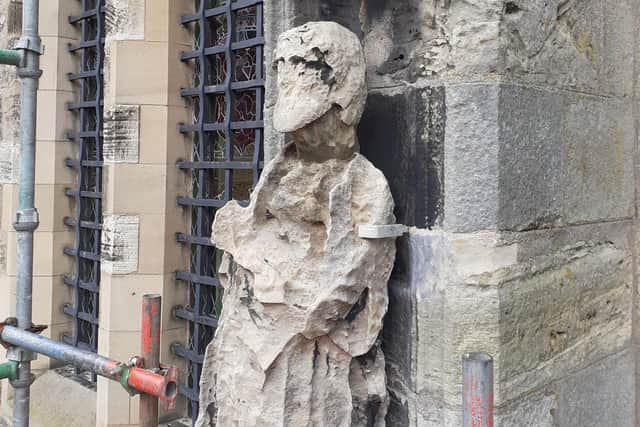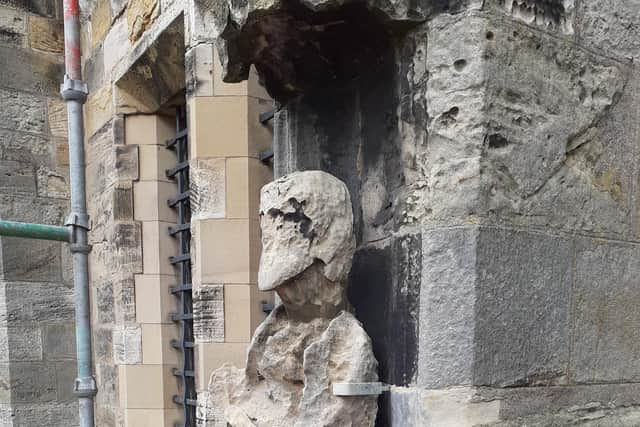Fife palace statues return home after undergoing urgent conservation work
and live on Freeview channel 276
The National Trust for Scotland has returned the remaining statues on the South Range of Falkland Palace.
The statues were removed for urgent conservation treatment, due to the deterioration of the stonework and damage caused by masonry bees.
Advertisement
Hide AdAdvertisement
Hide AdThe National Trust for Scotland is the conservation charity that over 90 years has saved, maintained and shared many of the country’s most loved places, rich with history, heritage, nature and culture


The statues, which were created by Dutch sculptor Peter Flemishman in the 16th century, were conserved with support from specialist conservation surveyors the Adams Napier Partnership and stone conservator Graciela Ainsworth.
The conservation work included pinning cracks and repairing the more severe delaminations with resin to prevent further decay. The statues were placed back in their niches, with discreet additional fixings added to secure them to the background.
Wendy Purvis, operations manager, said the essential work carried out on the statues will help to preserve them for future generations.


Advertisement
Hide AdAdvertisement
Hide AdShe said: “Falkland Palace was a beloved retreat for the Stuart Royal family, especially Mary Queen of Scots who like to ‘play the country girl’ here. James IV and James V updated and rebuilt whole sections in the 16th century to make the stunning Renaissance building you can still visit today.
"Much of the building is made from sandstone, which has experienced weathering and damage from pollution – as well as some more recent engineering work by the resident masonry bees! Sadly, there are only three statues remaining on the exterior of Falkland Palace and only one that is complete. Our essential conservation work will preserve these important artefacts for future generations. Hopefully they’ll be up for another 500 years!”


Research is underway into the history behind the statues and is part of ongoing conservation to the south façade.
“The conservation charity will also work with in-house experts and external specialists to develop possible alternative nesting places for the masonry bees.
Advertisement
Hide AdAdvertisement
Hide AdIt is hoped to encourage the bees to remain within the grounds of Falkland Palace.
